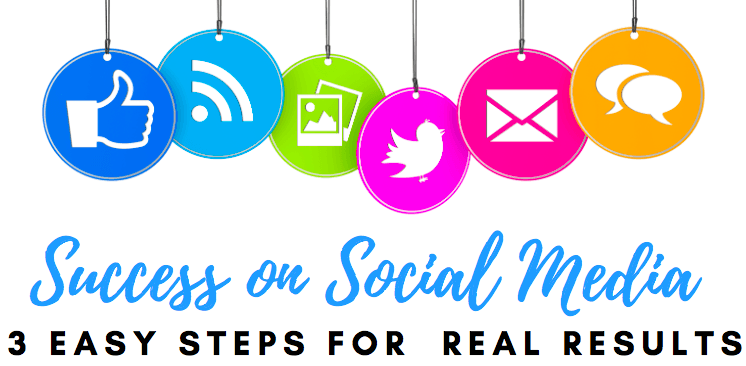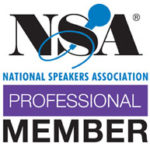What is the Elf on the Shelf? Unless you live under a rock, you’ve probably seen this toy taking the holidays by storm for years now. But what makes it a total sensation that people love (or love to hate)? And what can it teach you about how you communicate your own professional story?
Today I have a holiday themed episode for you and we’re going to be talking about powerful branding lessons from the Elf on the Shelf children’s Christmas experience. The little guy uses some basic marketing fundamentals very, very well – and is a great illustration of how this can work for your personal brand too! I’ve got eight core tips for you – four in this episode, and four coming up next week.
In this episode of The Career Rx we’ll discuss:
- The importance of being memorable
- How it helps to build on something already familiar (especially if your work is novel)
- How to use curiosity to do much of the work for you
- What makes you the ‘can’t miss’ product, service, or expert
These first four examples from Elf on the Shelf will help you stay top of mind for your skill and expertise, whether marketing yourself to your boss or marketing your services to new clients. These are simple concepts to help wrap up your ideas and present them in a fun and easy to understand way. Be sure to subscribe to the podcast so you don’t miss the second part coming next week.
“Go ahead and be confident and be bold.” – Marjorie Stiegler
In this Episode:
[1:55] Basic marketing ideas and how they apply to anything, even Elf on the Shelf
[2:35] Forget clever. It’s better to be catchy, easy to remember, and recognizable!
[4:40] Build upon something familiar to your intended audience
[5:55] Using well known concepts to introduce something new to the market (shout out to Steve Jobs, too)
[7:00] What makes Elf on the Shelf something you ‘have to have’? Hint – it is NOT the physical toy.
[9:00] The right dose of curiosity turns you into an opportunity magnet
[10:45] No hedging. But absolutely deliver on your promise!
[12:30] Write this list down and check it twice – and don’t forget to tune in for Part 2
Links and Resources:
The Branding Rx 18 hours of CME, mastering digital strategies for advancing your career, building your business, and growing your professional brand
My video – Branding Lessons from the Elf on the Shelf
LISTEN TO THIS EPISODE:
SUBSCRIBE TO THE CAREER RX PODCAST:
Get every episode on your preferred player…
Apple Podcast | Google Podcast | Spotify | TuneIn + Alexa | iHeart Radio
More for you:
Book:
Courses:
The Branding Rx 18 hours of CME, mastering digital strategies for advancing your career, building your business, and growing your professional brand
The Speaking Rx learn the business of professional public speaking to establish yourself as a thought leader you are, and get paid for your speaking expertise
Industry Insider – what to know about landing a nonclinical career without a new degree, a foot in the door, prior experience, or a pay cut
Launch an Online Course on Any Budget – know your course will sell before you spend any time or money to create it; plus, the exact logistical blueprint to get paying customers and a way to deliver your course without spending a dime (ready to scale up when you are!)
Let’s connect!
Twitter | Instagram | Facebook | LinkedIn
Thanks for joining me on this episode of The Career Rx!
Please be sure to leave me a review on Apple and don’t forget to send me your questions so I can answer them and give you a shout out on a future episode.
TRANSCRIPT: Episode 45 – Holiday Edition! Branding Lessons From Elf on the Shelf (Part 1)
Hey there, welcome to The Career Rx. I’m your host, Marjorie Stiegler. This podcast is all about the important stuff. They don’t teach you in medical school, about how to treat your career, like the business it really is, and how to be strategic about your success. I’ll show you how to use modern strategies to get ahead, create your own path, and do more of what you love. Every episode is inspired by questions from listeners just like you. So be sure to subscribe and of course, send me those questions, so I can use them on a future episode. So you don’t miss anything, be sure to always check the show notes on my website. Are you ready? Let’s get into it.
Hey, there, welcome back. In this episode of the podcast, it’s a holiday themed episode, we’re going to be talking about powerful branding lessons from the Elf on the Shelf, a really from me to you, but I’m going to base it on the Elf on the Shelf. And if you don’t know what the Elf on the Shelf is, then you may want to check out my video from a prior Christmas in which I am also talking about these same lessons, but it’s video so you can see the Elf, I’ll be breaking it down and also showing the Elf. But by now many, many, many people do know what I’m talking about, the Elf on the Shelf, and so if you can, you can just follow along by listening to this podcast.
This is obviously a seasonal topic. But you know, professional branding is one of my favorite topics. And it’s also the basis of my flagship course, The Branding Rx, which you should go check out right now if you haven’t yet 18 hours of CME, it’s all about career development and it’s all based on marketing and business principles of personal branding and professional value proposition and how to establish thought leadership, super action oriented and implementation focus. And what does that have to do with the Elf on the Shelf. It’s as I’m going to draw you the connections as we go on today. Because you can take these basic marketing ideas, and you can see how if you apply them to your own professional activities, sort of whether or not you have an actual business or an actual product to market, you can see how this can really help you the way that you communicate about your work. And that is what will advance your career, and it will advance your career more quickly.
So here we go. Lessons from the elf on a shelf and a shout out to the course of the branding prescription. There’s a lot to unpack here. So I’m going to do this in two parts. This episode is going to be the first four lessons that go with Elf on the Shelf and the next episode we’ll have the other four. So lessons one through four, let’s get into them.
Okay, lesson number one Elf on the Shelf is easy to remember. It’s catchy, it’s memorable, you hear it once and it sticks. So if you’re shopping in the store, or you’re online, perhaps more likely these days, or even if you’re just scrolling through a social media thread, and you see the Elf on the Shelf. It’s just easy to remember. So you can you don’t need to stop and take note of it, you’re very likely to be able to bring it back to mind An hour later or a few days later, you might say to a family member or spouse, you know, I saw this neat little toy, you know, you’ll be able to come up with what it was, you know, the Elf on the Shelf. Maybe because it’s short, maybe because it rhymes. I you know, I don’t know exactly what makes it memorable. But it is indeed memorable. And it’s easy to remember. So successful brands are easy to remember. And they’re easy to find. So when you’re thinking about how you describe your specialty, or your work, or even your particular area of expertise, be sure that you make it something that’s easy to remember. Now I realize that not everything is easy to remember, especially stuff that’s new and innovative, people haven’t heard of it before. So that’s kind of up to you, then it’s a branding opportunity to come up with a phrase or analogy or some way of making what you’re talking about. Really easy to remember.
The same might be true of your name, if you have a name that’s very difficult to remember. My kids play golf with a family whose last name is “Chianese”. And when you see it spelled you think Whoa, you know, it’s you’re intimidated to even attempt to pronounce it. But when we first met them, the father said to me, oh, it’s “chin” see, like chin and he pointed to his chin, and then “knee” pointed to his knee and then “see” and pointed to his eyes chin-knee-see. And ever since then, I mean, that was just what the one time we met, we never, never forgot it super easy. So they went out of their way to make something that they knew was difficult for some people to be incredibly easy. So your name your specialty, your area of research, whatever it is, you can do something similar. Make it easy.
Okay, number two, the Elf on the Shelf builds on something we already know. So this is the name and the concept is sort of ready-made as an adaptation of something that many people especially people in the target audience for this toy are already familiar with. I don’t mean to be excluding anybody here. My point is that for the right target audience for this, it builds on something that you already know people already know Santa. They he has elves. So this idea of Elf on the Shelf, that’s a basic household item, a shelf, the elf is something you already know what it is. So right away, there’s not a lot of confusion, it builds on something that we know, there is an element of newness. What is the elf doing on the shelf? Right? What kind of what’s going on there. But what the elf is very clear, they don’t have to describe in a way that would be really cumbersome.
You know, imagine trying to begin with this concept and having to explain what an elf is, and give the whole backstory of what an elf is, or even the whole backstory of Santa, then it’s not easy. And it’s not based on something that you already know. But one of the ways you can introduce something brand new into market and make it easy to adapt, easy to take up is by making it an extension or sort of an evolution on something that people already know. So again, when you’re describing your work, even if it is very innovative, think of what you can that is sort of a familiar analogy, or something that people already know, to as a starting point to help describe. And then you also describe, of course, how yours is different or better. And in this case, this elf is on the shelf. That in and of itself doesn’t tell us a lot.
But it is tied very clearly to something that is already familiar that people already know. And good brands do that. This is similar to when Steve Jobs took out that first iPod and said that it was like having you know 5000 Records in your pocket or I forget the exact words but building from something that people already knew. Because people know what music is right? They know what songs are they know what albums are, they didn’t know what an iPod was, that was totally new. But he built it on something that’s already known. So you want to do the same.
All right, the third is curiosity. This is an important part of all successful brands that they their ads and their materials build a little bit of curiosity. And it makes the customer want to seek it out a little bit. Elf on the Shelf has done that because Elf on the Shelf is easy to remember. And it’s building on something we already know. But there is that curiosity element, what is the elf doing on the shelf? What are we supposed to do with it. So there is a curiosity that might make you want to pick up that box and look into it a little bit more. And if you can capture people’s curiosity, then suddenly, you aren’t trying hard to push your message out any more people are coming to you. And that I think is what the Elf on the Shelf is doing here.
Now, even if you haven’t taken one of my courses, you’ve probably heard me talk about strategies either in this podcast or my blog, strategies about becoming what I like to call a, quote, opportunity magnet. That is the strategic ways for you to put yourself out there in front of others, enough to get them curious about you. For them to realize that you exist for them to realize you have an area of subject matter expertise that matters to them, or that you have a perspective that they would care about. And then they come seeking you out. So this is true, whether you’re a speaker, or an author, or professional with the service. This is also true if you’re looking to change careers or get a new job. This is especially true. When you’re when you’re thinking about wanting to be recruited. There’s a lot of proactive ways that you can really make yourself have much better luck there by positioning yourself to be in front of the right people and with enough presence there to get them curious about you. So you want to be sure that your titles do that if you’re a speaker, again, or an author, you writing blogs, you want to be sure that whatever advertising materials, if you have a business, that there’s a curiosity hook there.
And remember that if you have something that’s just a complicated, professional specialty, and it’s difficult for you to describe and really, you know, short, punchy, memorable words, what it is that is unique and important about you try to make it curiosity inducing. You don’t have to explain everything right up front. What you have to do is get people’s attention long enough to be able to unpack the rest. So especially if you have something that’s sophisticated and complicated and you need a few minutes with somebody, or a few minutes of their time to digest your materials to understand it. Make sure that you have some way of grabbing people’s attention and making them curious so that they will come seek you out.
Okay, number four, right on the box for the Elf on the Shelf. It says it’s a Christmas tradition. It’s a Christmas tradition? Now when I first saw this elf and I was a little bit late to the party because actually we only got our elf A few years ago, and the elf launched in 2005. But I’ll tell you that when the elf of when I first became aware of the elf, and I took a look at it, but it’s a Christmas tradition. How on earth is it a Christmas tradition? I’ve never heard of it before. Nobody in my generation had ever heard of it before. We had other traditions like a tree and we had Santa and we had el As I mentioned, right building off something that you know, but this was definitely not something that is a Christmas tradition, at least not for anybody else that I knew of. And I think, at the time, not for anybody except for the family who launched this product.
But what makes this work is that it’s positioning itself as a absolute must have not to be missed. And there’s no hedging language like this is sure to become a Christmas tradition, or this might be your new favorite Christmas tradition, they just.. they’re putting a stake in the ground, they’re confident, and they’re just saying is, this is the Christmas tradition. And now, now it is right now it’s really grown. It’s been quite successful. So how does this have anything to do with you and your business? And first, I’m going to make an assumption, actually, I assume that you can absolutely deliver on whatever you promise.
So whatever your value proposition is, if your keynote talk or your service, or your leadership style, or sort of whatever it is, you’re effectively selling, promises to be life changing, then I am assuming that you absolutely can deliver, right? So I’m not saying make declarative statements that oversell or are in any way sort of disingenuous with, you know, what a person can expect to experience from working with you. But what I am saying is, go ahead and say it, don’t hold back, don’t hedge your language. Go ahead and be confident and be bold in saying what the benefits are or what the outcomes will be of working with you.
You want to have some powerful declarative statements that are not in hedging language. Recently, on the podcast, we have talked about hedging language and how that sort of takes away from your power either when you’re speaking, when you’re negotiating. Lots of people listening to my podcast have very different professional goals. If you just want to kind of move up the ladder, then you want to think about your boss as sort of the customer because you want to describe your work in a way that really meets your boss’s needs. And that makes your boss’s ambition, achieved. If instead you want actual patients or clients, if that’s sort of where you’re marketing, then you have to look to what do they want, what do they consider success? And speak to that, just describe your promise, describe your value proposition, and then just be sure of course that you can deliver.
Okay, that’s the first half of the eight powerful branding lessons from the Elf on the Shelf. For a quick recap, we talked about the importance of your brand being easy and memorable. We talked about building upon something that people already know, especially if what you do is very innovative, or if your name is very unique, make sure that it’s memorable and builds on something that you already know. We talked about the importance of wrapping up what you do in curiosity and putting yourself out there in ways that piques people’s curiosity so that they will then come to you. And you can be that opportunity magnet instead of chasing opportunity all the time. And number four, we talked about the importance of abandoning your hedging language and really putting that stake in the ground of whatever it is that you promise as your value proposition when someone works with you. That’s what they’re going to get. Don’t be shy about it. Don’t say may or might just put it out there with confidence. Don’t hold back or hedge your language.
Join me next time to catch the next four lessons about professional branding that we can all learn from the Elf on the Shelf. Bye for now.
Thanks for joining me on this episode of The Career Rx. Be sure to leave me a review on Apple podcasts or whatever podcast player you’re using to listen today. And definitely send me those questions so I can answer them and give you a shout out on a future episode. Bye for now.








